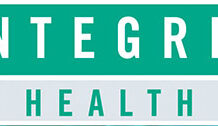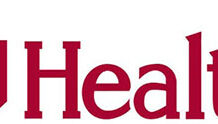CAREERS IN NURSING
CHANGE AGENT: INTEGRIS EDMOND
by Bobby Anderson, RN – staff writer/photographer
Madison Nichols may have graduated nursing school in 2015, but she’s already become a change agent in role as ICU nurse at Integris Edmond.
A few months back, Nichols found herself orienting a new nurse. It was then that she noticed the unit’s sepsis screening tool was out of date. She asked if she could tackle the update and was given her supervisor’s blessing.
From there, Clinical Director Mitzy Bayne Baggott, BSN, RN, made sure she was plugged into subcommittee meetings with physicians, pharmacy and quality control staff.
“I realized the reasons we were falling out on our sepsis protocol and I developed a checklist for the nurses,” she said. “We’re able to hit all the things required and get the sepsis protocol done in a timely manner, that way it’s just all laid out and there’s no question about it.”
The committee worked on streamlining a septic patient’s route from the ER to the ICU.
“That’s where we were falling out on. By the time we got them to the ICU we didn’t have enough time to get things all set up when a lab could have been drawn in the ER,” she said. “We looked at the times and decided we needed to do something.”
Nichols began working on the protocol the beginning of May and finished by the end of June. Several sets of eyes were involved and Nichols leaned heavily on her night shift coworkers.
“It’s definitely a positive environment. I’ve really enjoyed being able to be a part of that. Coming from night shift, where it’s a totally different world and being able to attend meetings has been really cool. I’ve really enjoyed it and getting to know everyone.”
She had no clue that a simple request would put her in the forefront of policy.
“No, I didn’t. But it’s really cool to be able to be the voice for the nurses and hopefully improve patient outcomes,” Nichols said. “I didn’t have any pushback at all. My managers and directors were really supportive and appreciative I wanted to take that on.”
Surviving sepsis was a focus in the June issue of Critical Care Medicine, which highlighted a new “Hour-1 Bundle” for treating septic patients.
Reflecting the latest evidence, the Hour-1 Bundle highlighted five steps that should be implemented as soon as sepsis is recognized.
The steps include:
Measure the blood lactate level. A high lactate level may indicate that the tissues are not getting enough oxygen from the blood and may identify a patient at higher risk of further deterioration.
Perform blood cultures to identify the cause of the infection. Blood samples should be taken before antibiotics are administered, if possible.
Administer broad-spectrum antibiotics that are active against the causative organism.
Start intravenous fluids. Fluid resuscitation is an essential step to stabilize the patient’s condition.
Administer vasopressors to raise blood pressure. This is a critical resuscitation step in patients with septic shock.
So going through the process has given Nichols the default title of “sepsis nurse.”
“Pretty much,” she laughed. “All the floor nurses know I did this so they’ll come grab me if they’re concerned about a patient.”
Nichols graduated Northwestern Oklahoma State University in 2015. She worked at Integris Baptist prior to coming to Edmond.
Nichols was voted nurse of the year for her department. And now that she’s gotten a taste for process improvement she’s excited to do more.
She’s the chair for the hospital’s Council of Nursing Excellence.
“We’re talking about a couple different programs we could possibly do,” Nichols said of the council, which is comprised of each unit’s nurse of the year and anyone interested in helping out.”
Her ICU coworkers couldn’t be prouder.
“In our ICU we’re all super into projects so we collaborate on a lot of things to streamline processes that way we’re not so stressed out and the time comes and we have a CRRT or a balloon pump so we’ve developed binders we can pull out when we have patients on those machines,” she said. “The nurse taking care of them can feel more comfortable and there’s way to troubleshoot.”
“I feel like as an ICU we’re all super into improving things so it’s nice to have that encouragement from my coworkers as well.”

Small but BIG.
Small enough to care about you,
big enough to care for you!
We are welcoming experienced RN’s for all areas to apply!
BEHAVIORAL HEALTH CATH LAB RN MED/SURG EMERGENCY DEPT CRITICAL CARE SURGERY LABOR AND DELIVERY FLOAT POOL
myalliancehealth.com
EOE













